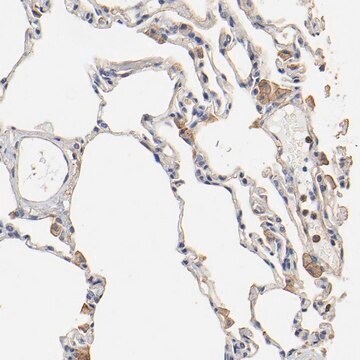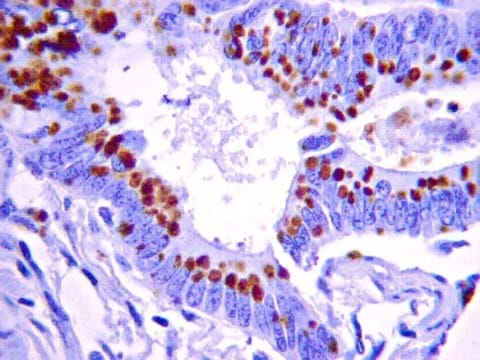05-1144
Anti-Talin Antibody, CT, clone TD77
clone TD77, from mouse
Synonym(s):
talin 1
About This Item
Recommended Products
biological source
mouse
antibody form
purified immunoglobulin
antibody product type
primary antibodies
clone
TD77, monoclonal
species reactivity
chicken, human, mouse
technique(s)
immunohistochemistry: suitable (paraffin)
western blot: suitable
isotype
IgG1
UniProt accession no.
shipped in
wet ice
target post-translational modification
unmodified
Gene Information
chicken ... Tln1(395194)
human ... TLN1(7094)
mouse ... Tln1(21894)
General description
C-terminal rod domain (residues 434-2541), links integrins to the actin cytoskeleton.
Specificity
Application
Quality
Western Blot Analysis: A 1:500 dilution of this lot detected Talin in 10 ug of Jurkat lysates.
Target description
Linkage
Physical form
Storage and Stability
Other Notes
Legal Information
Not finding the right product?
Try our Product Selector Tool.
Storage Class
10 - Combustible liquids
wgk_germany
WGK 2
flash_point_f
Not applicable
flash_point_c
Not applicable
Certificates of Analysis (COA)
Search for Certificates of Analysis (COA) by entering the products Lot/Batch Number. Lot and Batch Numbers can be found on a product’s label following the words ‘Lot’ or ‘Batch’.
Already Own This Product?
Find documentation for the products that you have recently purchased in the Document Library.
Our team of scientists has experience in all areas of research including Life Science, Material Science, Chemical Synthesis, Chromatography, Analytical and many others.
Contact Technical Service








